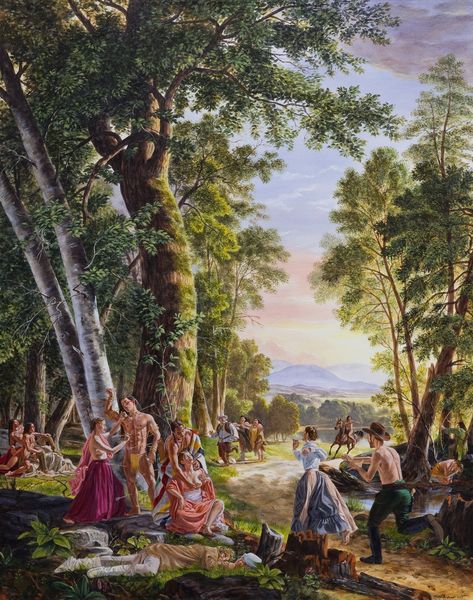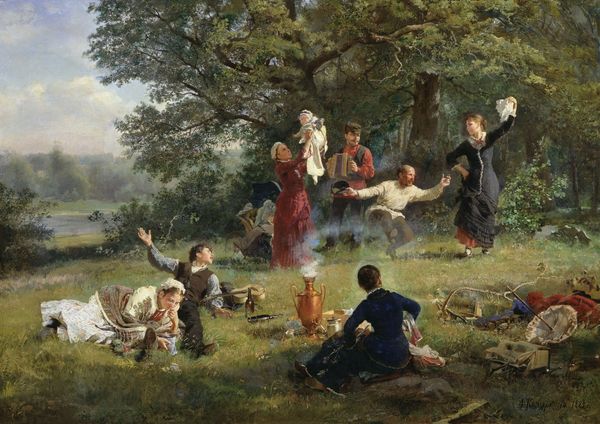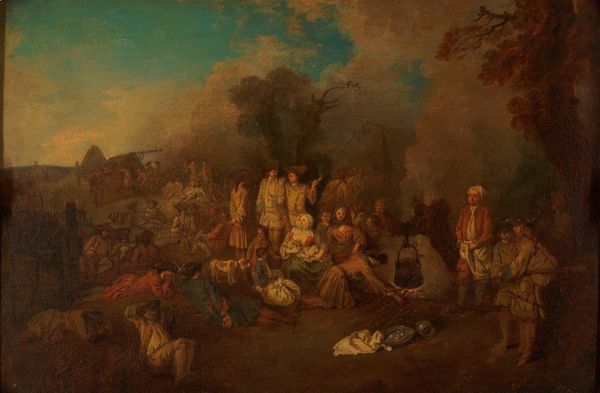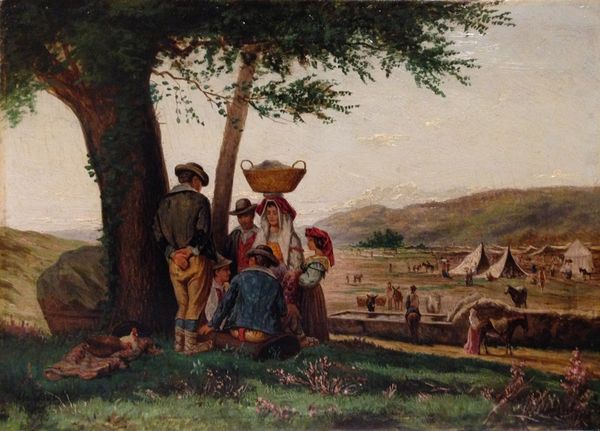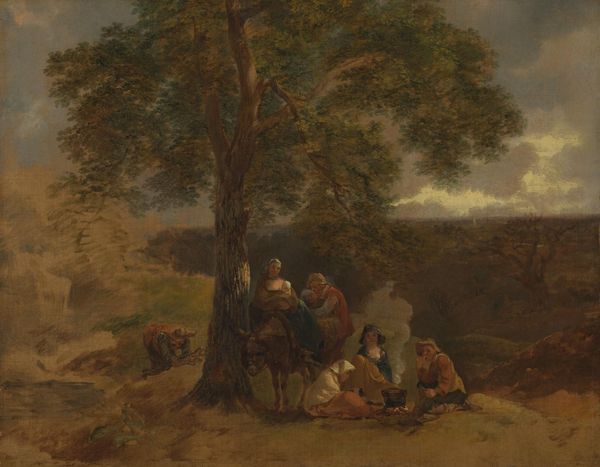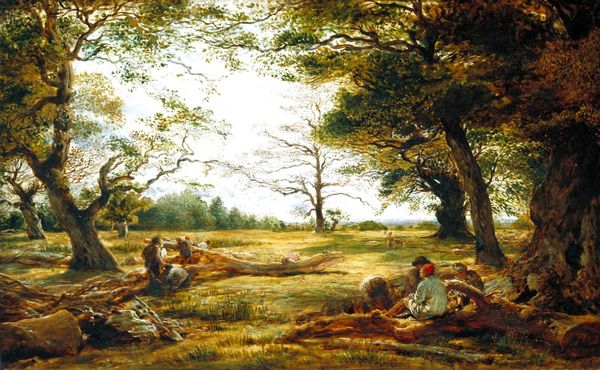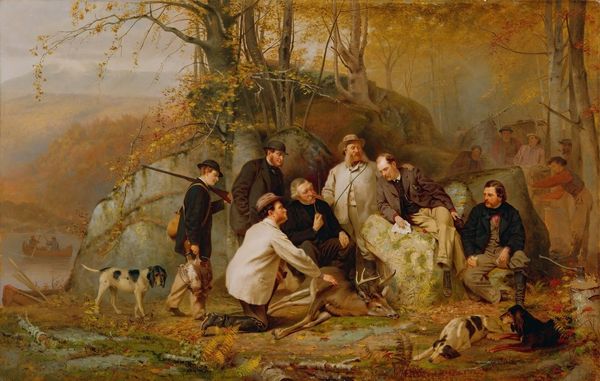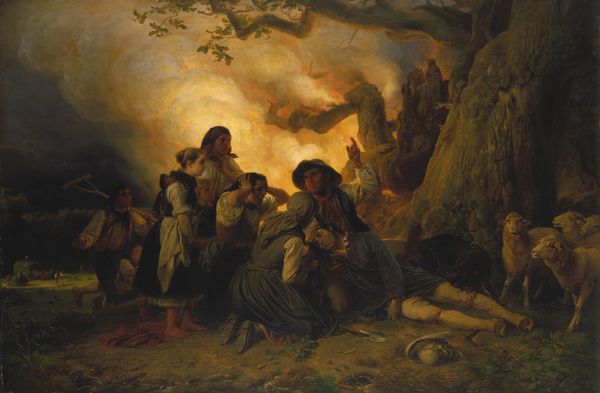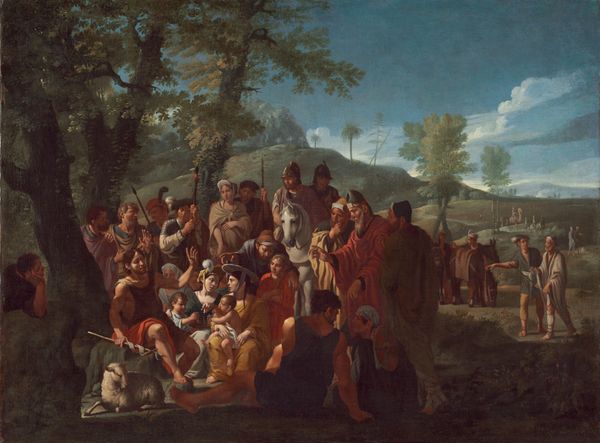
painting, plein-air
#
contemporary
#
painting
#
plein-air
#
landscape
#
figuration
Copyright: Kent Monkman,Fair Use
Curator: Looking at Kent Monkman’s "A Child Is Born" from 2017, a painting rendered in plein air, I’m immediately struck by this incredible sense of…pastoral unease? It feels like a collision of worlds. Editor: Unease is a great word. Monkman here, with his signature blend of historical painting styles, crafts a powerful commentary on the colonial narrative and its impact on Indigenous communities. It's not just pastoral, but actively disruptive. Curator: Absolutely! It's like he's staging a scene, almost theatrical in its presentation. We see this landscape, bathed in a sort of idealized light, yet populated by figures engaged in various states of… well, is it conflict? Is it celebration? It's wonderfully ambiguous. Editor: Precisely! The ambiguity is key. Look at the Madonna-like figure central to the piece—juxtaposed with those European figures who appear either incapacitated or oblivious. This is Monkman interrogating the visual language of colonization, its religious symbolism and power dynamics. Curator: The painting’s scale is worth noting, it really does invite the viewer into this charged space. But the figures… they seem almost oblivious to one another, caught in their own dramas, which only heightens the overall tension. Do you think that reflects the sort of… disconnect inherent in the colonial project? Editor: Absolutely. The disconnect is the point. These figures, representing different cultural and historical positions, are sharing the same space, but not the same reality. Monkman masterfully uses this dissonance to highlight the historical and ongoing erasure of Indigenous experiences. It's not a pretty picture, and it's not meant to be. Curator: Well, it's a gorgeous painting, I must add. Monkman is such an astute observer of both art history and contemporary society, a magician, almost. Editor: A magician who uses paint as a weapon, dismantling harmful myths. It is visually arresting, undeniably beautiful but the beauty serves a more profound purpose. A very powerful purpose. Curator: This piece asks questions we might not want to answer. Makes one think differently about these idyllic, peaceful places. Editor: It makes us consider how idyllic places mask very conflicted spaces and relations. It encourages us to delve into how power is seen, felt, represented, and performed.
Comments
No comments
Be the first to comment and join the conversation on the ultimate creative platform.
